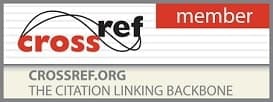Printed Journal | Refereed Journal | Peer Reviewed Journal
2024, Vol. 5, Issue 1, Part A
Effect of magnesium and iron on the mechanical properties of aluminium-4% copper alloy
Author(s): UV Anyafulu, KC Nnakwo, CN Nwambu and EE Nnuka
Abstract: This study evaluated the effect of magnesium and Iron on the secondary phase and mechanical properties of aluminium-4% copper alloy. The dopants were added in concentrations of 0.5%, 1.0%, 1.5%, 2.0%, 2.5%, 3.0%, 3.0%, and 4.0% by weight, mixed with stirrer, and cast by gravity die casting. Subsequently, the specimens were subjected to machining. The Mechanical properties such as ultimate tensile strength, hardness, impact strength, and %elongation were determined for each specimen. The microstructure of the samples was also studied using a metallurgical microscope. The results obtained from the study showed that the ultimate tensile strength and hardness value of the alloy increased with an increase in the concentration of magnesium. Magnesium also reduced the ductility slightly, with little increase in impact strength. Iron increases the ultimate tensile strength, and hardness of Al-4%Cu up to 1.5 wt % Fe, then a sharp increase at 2.0 wt % Fe, followed by a decrease in both properties from 2.5 to 4.0 wt % Fe. Impact strength increases to 2.5 wt % Fe, followed by a decrease from 3.0–4.0 wt % Fe. Also, doping Al-4wt %Cu base alloy with iron decreases the ductility of the metal. This is due to the formation of (CuFe) Al6 and Cu2feAl17. Also, the formation of Al7Cufe affected the concentration of copper in the base metal, which then no longer leads to the formation of phases that are desired (especially Al2Cu). The microstructure analysis was carried out using an optical microscope and SEM. By SEM and EDS analysis of the phase ɵ (CuAl2), Al6 (Cu, Fe) and Al7Cu2Fe were observed.
Pages: 07-12 | Views: 199 | Downloads: 147
Download Full Article: Click Here

How to cite this article:
UV Anyafulu, KC Nnakwo, CN Nwambu, EE Nnuka. Effect of magnesium and iron on the mechanical properties of aluminium-4% copper alloy. Int J Civ Eng Archit Eng 2024;5(1):07-12.







 Research Journals
Research Journals